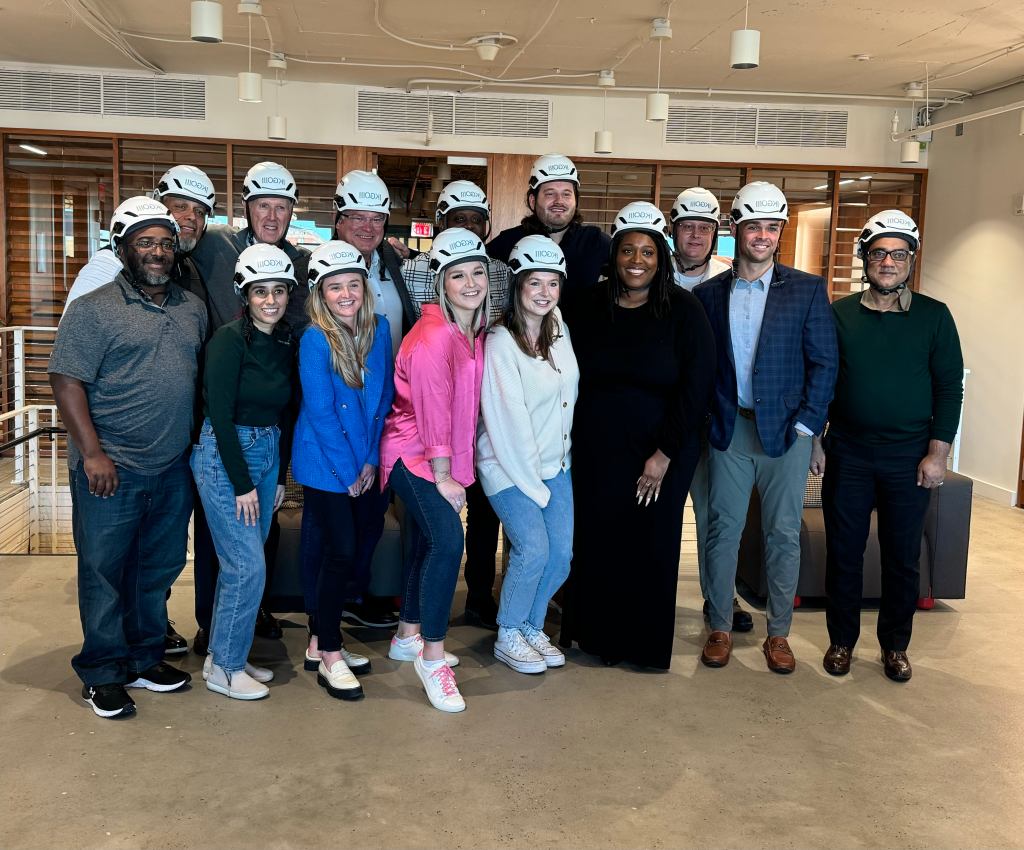In the ever-evolving landscape of the professional world, the year 2024 promises to bring forth a host of trends that will reshape the way we work and interact within corporate environments. We reached out to our team to gain insights into what they believe will be the key drivers of change in the workplace this year.
Here’s a look at the trends they foresee and the impact they are expected to have on the future of work.

Hybrid Work is Here to Stay… Again!
A recent survey conducted by The Conference Board in 2024 found that only 4% of CEOs will prioritize getting employees back to the office on a full-time basis. The Bureau of Labor and Statistics states that with unemployment at a 50-year low, CEOs will be focused on keeping good employees. Conversely, the number of full-time remote employees will be reduced. And with that, flexibility will continue. Flexibility, once a perk, is now a cornerstone, and investments in cultivating a culture that values not only drive company growth but also create a workspace where individuals feel genuinely valued and motivated.
“Hyper-flexibility will take center stage, with companies further innovating agile work arrangements & social engagements.”
— Ambrose Dodson, Relocation Manager


“This year I think you will see the trend of the four-day work week accelerate. Four-day work week studies are already showing the benefits for employee health and increased productivity. Many companies that have participated in four-day work week trials decided to continue with a four-day work week even after the trial ended.”
— David Kopera, Financial Analyst
A Holistic Approach to Employee Wellbeing
Forward-thinking companies recognize that success extends beyond profits and productivity to encompass the well-being and satisfaction of their workforce. The U.S. Surgeon General’s Framework for Workplace Mental Health and Well-Being highlighted the importance of creating a workplace that supports 5 key essentials for wellbeing: protection from harm, connection and community, work-life harmony, mattering at work, and opportunity for growth. Workplaces will make updates to benefit offerings, culture, and even spaces to support these essentials.
“I believe workplaces will and should continue to focus on employee mental and physical health. As a society, we are more aware of the importance of wholistic health and how to prioritize it responsibly. The same focus must be reflected in organizations. The average person spends 2,000+ hours working a year. The failure to put well-being and health at the forefront is a missed opportunity for everyone. We are all humans first, not employees, and this needs to be kept front and center this year and in the years to come.”
— Mary Kate Zabroske, Culture and Engagement Manager


“As we step into this new era, we need to redefine success by placing acknowledgment of human creativity, empathy, and collaboration as the cornerstone of a thriving workplace in the age of technological advancement.”
— Lakshmi Gondi, Senior Strategist
What does the U.S. Surgeon General’s Framework on Workplace Mental Health and Well-Being mean for your office? Check out our recent blog to learn ways you can update your office to support your employees.
Live, Work, and Play Will Coexist
The commercial real estate trends that became prominent in 2023 will continue and intensify through 2024, driven by the structural changes in how we work that took a foothold during the pandemic. This year, we will see a move to redevelop buildings and replan neighborhoods to make mixed-use and inclusive neighborhoods. Buildings that were originally slated for “work” will move to “live, work, and play.” Neighborhoods will be more diverse and open – allowing for more inclusivity and new businesses to take root.
There will be a drive for more efficient and choice-rich spaces for employees – especially for leasable corporate real estate. People will appreciate a physical workplace that caters to their unique forms of productivity and collaboration. Neurodiversity and Inclusivity will be significant in thinking about how future space will be designed. Autonomy and Flexibility – for where and when employees work – will drive the future design of spaces. Nomenclature for space types will move from just focus, collaboration, and socialization to verbs like make, create, commune, congregate, recharge, and convene.
“Low lease and occupancy rates and the resulting financial issues for both owners and uses of real estate continue to have a negative impact. These impacts are driving down values, resulting in an ever-increasing number of properties being sold at substantially lower prices. The challenge and opportunity for those who choose to invest in these properties, and for those of us who provide advice and management services in this market, is to identify and implement new and alternative ways to maximize profitable utilization of these assets. Optimistically, 2024 has the potential of being the jumping off point from where we embrace how we work going forward, accept the challenge, and seize the opportunity to envision and execute real estate services differently.”
— Jeff Frengel, Director of Project Management


“With reduction in some real estate portfolios for companies, I believe businesses will take the opportunity to update their remaining space so they are more welcoming for staff to come back in a hybrid or full-time fashion.”
— Jaclyn Cavanaugh, Project Manager
“In 2024, we’re stepping into a world where our neighborhoods are as multifaceted as our lives. The future is about spaces that adapt to us—where living, working, and playing coexist in skyscrapers. There will be a push to foster vibrant and inclusive communities and opening doors for diverse groups of people, new businesses, and inclusive opportunities.”
— Mathew Xavier, Director of Innovation and Change

 Skip to content
Skip to content
